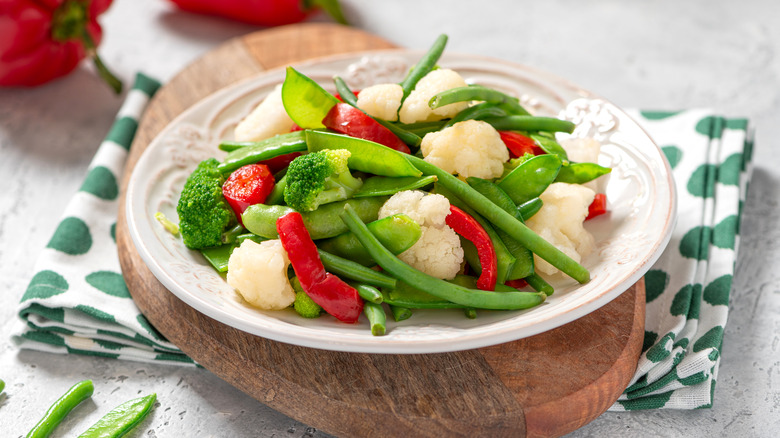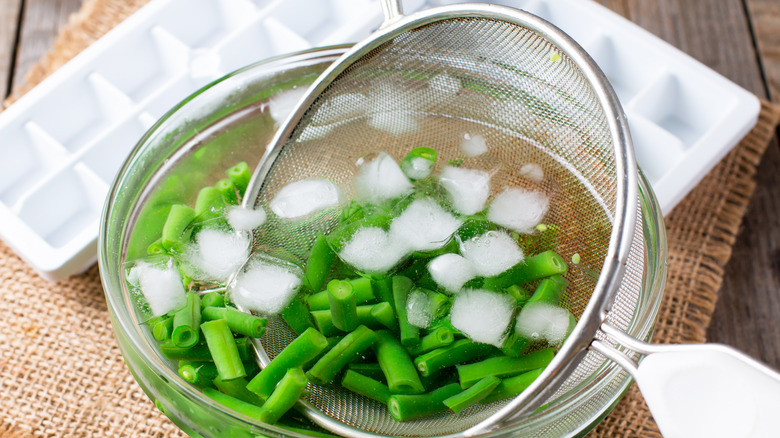Blanching Vs. Steaming: Which Is Better?
Both blanching and steaming involve cooking lightly using very hot water to retain more nutrients than other, more intensive cooking methods (per Eat Right & Check Your Food). In a side-by-side comparison of boiled versus steamed vegetables, boiled greens lost 45% of vitamin C and 40% of their folate (B9), according to Check Your Food. In stark contrast, steamed greens only lost 15% of each.
Blanching is used to help preserve color, flavor, and texture of delicate items, such as baby asparagus or fresh peas, or fresh items that are being preserved or frozen (per Bon Appétit & the National Center for Home Preservation). Blanching also helps clean produce before it's frozen or preserved and can stop the growth of microorganisms.
Now that you know about the uses and benefits of these cooking methods, let's answer the question you're too embarrassed to ask: Just what exactly is blanching, anyway?
Blanching & steaming: What's what
You're probably already familiar with the steaming process. You lower a metal basket or bamboo steamer into a pot with a small amount of water bubbling away in the bottom. Add your veggies, pop a lid on, and come back in a few minutes for perfectly tender veggies that still maintain their flavor and nutrition (per CNN). While it can be tempting to think that more water will yield faster results, you want to leave one to two inches between the water line and the bottom of your basket (per Today). You can also have a little fun by throwing aromatics such as fresh garlic, ginger, or rosemary into the steamer with your veggies for extra flavor.
Blanching, meanwhile, involves boiling veggies for a short period of time (per the National Center for Home Food Preservation). Wait until the water has come to a full boil to add your vegetables, cover it with a lid, and wait for it to return to a boil before you start counting towards your (surprisingly short) blanching time. As soon as the blanching time is over, remove the veggies and plunge them into an ice bath to stop the cooking.
According to Bon Appétit, blanching (and the subsequent ice bath) isn't necessary for everyday cooking and should be reserved for preserving delicate flavors or removing tricky skins from foods such as almonds, peaches, or tomatoes. Cold sink water and separation should halt the cooking sufficiently in ordinary circumstances.

